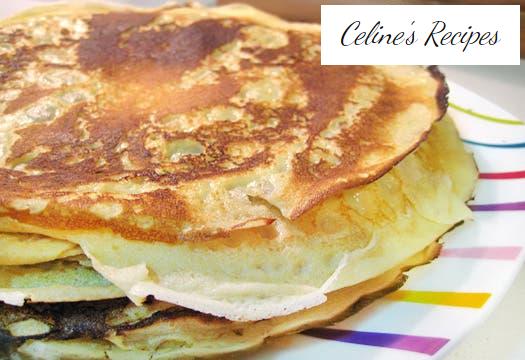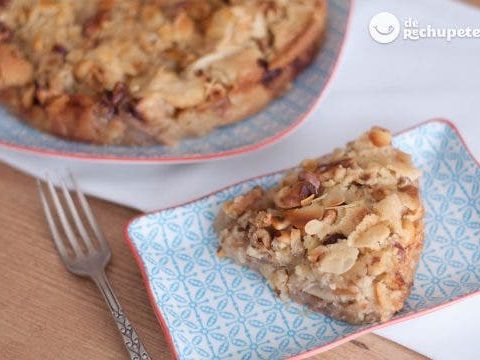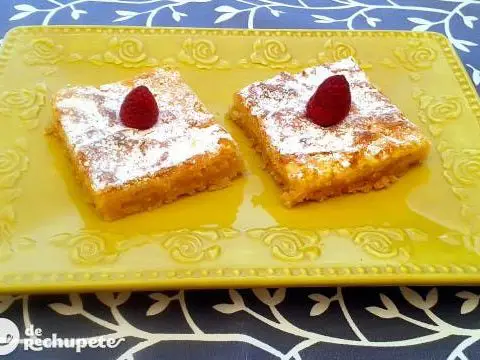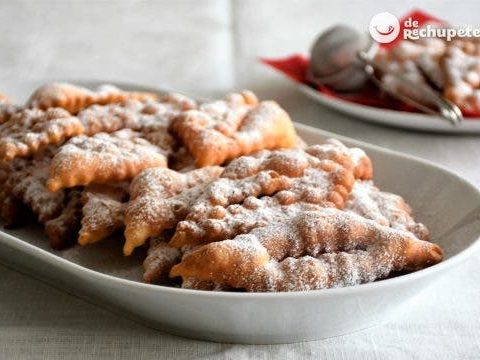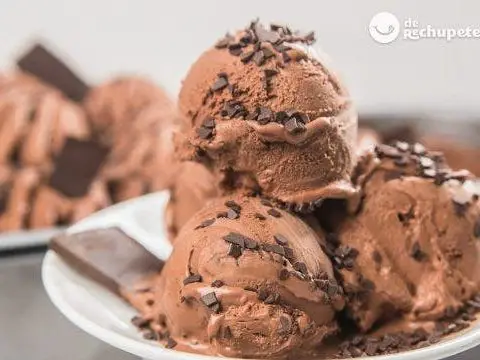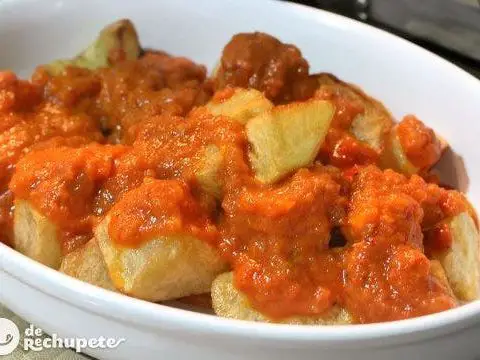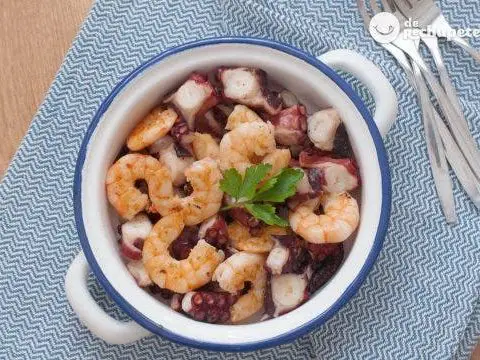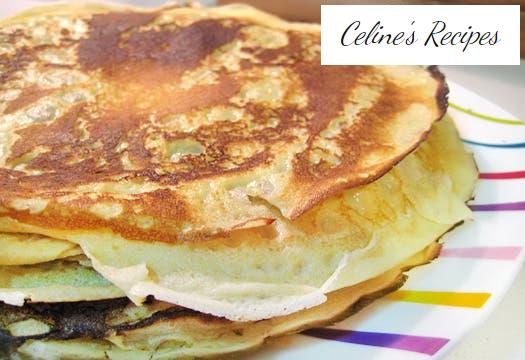
Info.
- Half
- 30 minutes
- For 6 people
- 0.7 € / person
Lately I have many questions about how to prepare pancakes or crêpes , I have decided to go together the questions and advice (some are yours) that I transmit to you today in this post.
I hope it helps you and now you do not have an excuse not to prepare them at home. When we talk about pancakes and pancakes most say they are different but the truth is that they are very similar.
The pancakes, freixó, afilloa, filloga or fisuelo (the name varies depending on the region), are one of the most famous products of Galician gastronomy and are typical of the time of the slaughter and the entroido or carnival, so much so that the authentic ones incorporate pig blood in their preparation.
There are many recipes for preparing pancakes, but they all use at least flour, milk, eggs and salt. The secret of the most exquisite lies in the art of maintaining the constant temperature of the pan, stone or cast iron plate (filloeira) where they are cooked and the thickness of the pancakes, the finer the richer.
Unlike crepes from French Brittany, in Galicia pancakes are never made with wholemeal flour or served with egg, sausage … although we can find authentic broth pancakes in many Galician towns. But surely the sweet format is the most widespread, the milk pancakes.
Pancakes, crepes or crepes are very similar to pancakes or vice versa, they are native to the Brittany region of western France.
In this French region we find two similar dishes: the crêpes made with white wheat and generally reserved for sweets and the galettes made with buckwheat or buckwheat reserved for salty fillings. Unlike pancakes, they add butter to the recipe. I hope you like the explanations and especially the recipe.
Preparation of the pancakes
- We wash a lemon (or if an orange if you prefer its flavor), grate without reaching the white part of the fruit because it is bitter and we reserve.
- The crêpe pasta-cream is quite easy to prepare. In a bowl we pour the milk, the flour, a pinch of salt, the butter in the ointment and the eggs. Mix everything with the mixer without lumps. Let it rest for an hour so that it finishes thickening although the cream must be loose.
- If they are sweet crèpes, add to this cream the lemon or orange zest, a tablespoon of vanilla essence and 2 tablespoons of sugar.
- Spread a little butter in a hot nonstick skillet. An easy trick is to break some butter into a stick, wrap one end in aluminum foil to hold it, and spread the pan on the other. Spread the entire pan in this way until the butter is melted, it should not be very greasy but we should not fall short either.
- The first pancake is for testing (I eat it at the moment), it is the most greasy because the frying pan picks up the temperature point and the degree of fat of the butter, the second usually comes out perfect.
- When the skillet is hot, add the cream so that it covers the entire bottom, only just so that they are fine. I use a 22 cm deep frying pan and cream the size of a ladle, as you see in the attached photo (do not pour too much because otherwise they will be very fat). We lift, tilt and turn the pan so that the cream is spread over the entire bottom.
- The pancake will start to cook instantly, we will have it for 15-20 seconds at medium temperature and when the edges start to fold up (because they are toasted) it is the right time to turn it with the fork. When you turn it over if the tone of the toast is not golden it will be due to a lack of egg, you can take advantage to add another to the cream. Brown on both sides and stack on a large plate. We continue making the crêpes until the cream is finished. If the fork is not good for you, you can use the trick of turning the pancake with a plate as if it were a potato omelette. As you get more practical, it will no longer be necessary.
Once cold, they can be kept in the fridge or even frozen, although only if there are leftovers that usually do not happen at home … hehe. And there you have them as appetizing as the photo. This recipe makes about 15 pancakes, it all depends on the size of the pan and the thickness of the pancake.
Freshly made and simply with sugar they are delicious, but if we want something more elaborate we have many options:
- If they are salty, with a filling of foie , meat, fish or seafood
- If we prepare them sweet we can sprinkle with icing sugar and gratinate them so that they glaze, flambéed with some liquor, such as Grand Marnier or cognac (the famous crepes Suzette, they have an orange juice sauce and flambé with cognac), filling them with jams, fruit compote, pieces of fresh fruit, cream, Catalan cream , accompanied or filled with chocolate … Imagination to power!
Tips for preparing pancakes
- I usually use the traditional frying pan (which is non-stick) but you can find pan crêpes (crepe makers) on the market with low edges to easily turn them. They are made one by one and stacked on top of each other to conserve heat.
- The preparation of the pancakes is very similar to the previous explanation but with slight variations in the ingredients and texture: the pancakes are always with wheat flour, milk is usually substituted for broth if they are salty and butter for bacon, but only for cooking. A mixture or whipped cream called amoado is prepared consisting of egg, flour, milk, water and salt. The real secret lies in its cooking, especially the constant temperature of the “filloeira” spread with bacon so that the cream and finesse slide when preparing them.
- The sweet crepes are based on milk such as crêpes and are accompanied by sugar, honey, custard, jam, fruit compote, chocolate. You can add a little anise, vanilla essence, a splash of rum or brandy to the cream and they are taken folded in the middle in the form of a handkerchief or rolled up.
- The pancakes salty usually incorporate broth or cooked seafood broth and butter is often replaced by pork bacon. Its fillings are usually pork products, wrapping a roasted or fried chorizo or with any ingredient of the stew such as lacón, orella, cachucha, morro, grelos, etc. In Galicia salty pancakes are usually eaten accompanying the Galician stew and in the time of slaughter they are prepared with pork blood, I assure you that they are delicious.
- In Lestedo, very close to Santiago de Compostela, “A festa da Filloa” is usually celebrated . It is a gastronomic festival held since 1984 in the Coruña municipality of Boqueixón. It was born from the decision of the residents of the parish to recover a tradition from the Ulloa region and prolong the acts of the entroid.
- It is celebrated on the Sunday following Carnival Tuesday, also called Piñata Sunday. The high quality of the pancakes is due to the skill of the artisans to maintain the indicated temperature of the pancakes , which are cast iron plates that start from 11.00 am and where you can prepare up to 1,500 pancakes per hour. Visitors have to exchange their money for pancakes , with which they can purchase the corresponding sweet or salty pancakes. Other local products such as ear, chorizo, churrasco, honey, etc. are also frequent at the party.
